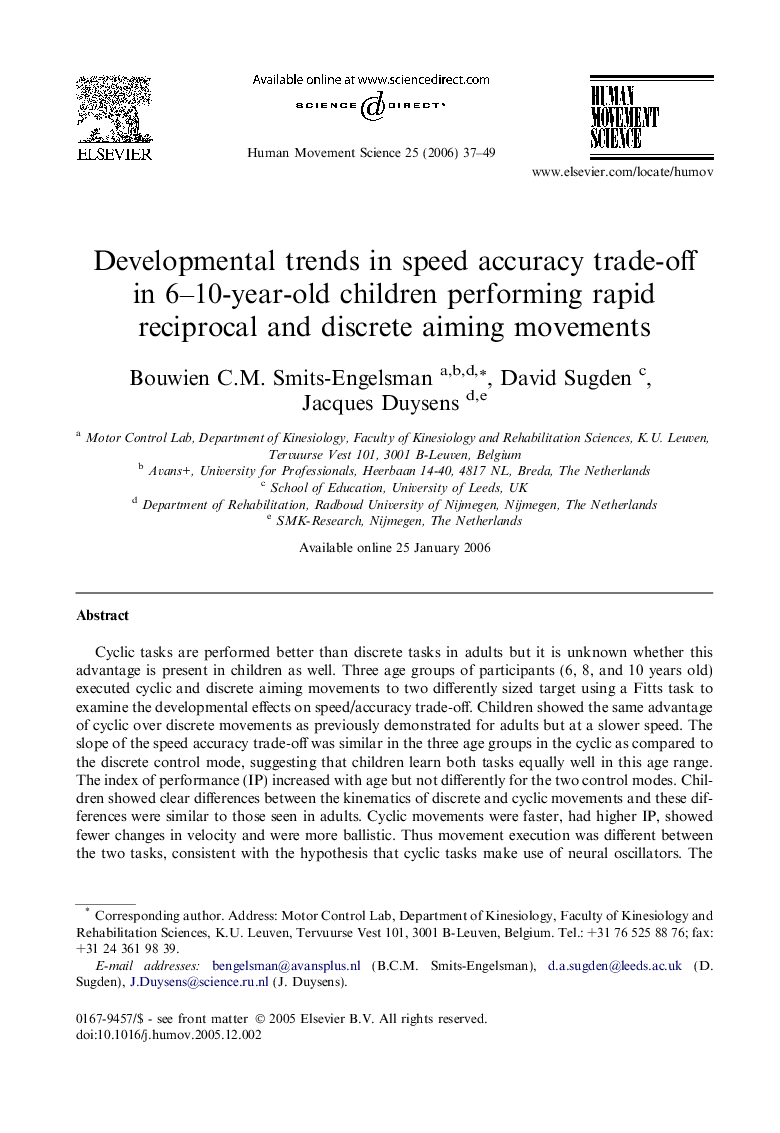| Article ID | Journal | Published Year | Pages | File Type |
|---|---|---|---|---|
| 928970 | Human Movement Science | 2006 | 13 Pages |
Cyclic tasks are performed better than discrete tasks in adults but it is unknown whether this advantage is present in children as well. Three age groups of participants (6, 8, and 10 years old) executed cyclic and discrete aiming movements to two differently sized target using a Fitts task to examine the developmental effects on speed/accuracy trade-off. Children showed the same advantage of cyclic over discrete movements as previously demonstrated for adults but at a slower speed. The slope of the speed accuracy trade-off was similar in the three age groups in the cyclic as compared to the discrete control mode, suggesting that children learn both tasks equally well in this age range. The index of performance (IP) increased with age but not differently for the two control modes. Children showed clear differences between the kinematics of discrete and cyclic movements and these differences were similar to those seen in adults. Cyclic movements were faster, had higher IP, showed fewer changes in velocity and were more ballistic. Thus movement execution was different between the two tasks, consistent with the hypothesis that cyclic tasks make use of neural oscillators. The slower movement speed in young children is consistent with their limited ability to use open loop control.
